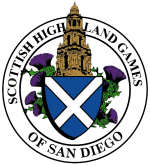Irish Gaelic
Irish Gaelic is a Celtic language that is spoken in Ireland. It is one of the official languages of Ireland, alongside English. The language has a rich history dating back to the 4th century when it was first spoken in Ireland. Today, it is estimated that around 1.8 million people speak Irish Gaelic, with the majority of speakers located in Ireland.
Irish Gaelic has a unique sound and structure that sets it apart from other languages. It has a complex grammar system that includes mutations, which change the beginning of words depending on their context. The language also has a distinct pronunciation, with many sounds that are not found in English.
Despite its rich history and cultural significance, Irish Gaelic has faced challenges in recent years. The language was suppressed during British rule in Ireland, and many Irish people were forced to speak English instead. Today, the language is still at risk of decline, with many young people choosing not to learn it.
Efforts are being made to preserve and promote Irish Gaelic, including the use of the language in education and government. There are also many resources available for those who wish to learn the language, including classes and online courses. With continued support and interest, Irish Gaelic can continue to thrive and remain an important part of Ireland’s cultural heritage.
Scottish Gaelic
Scottish Gaelic is a Celtic language spoken in Scotland by a minority of the population. It is one of the three Goidelic languages, along with Irish and Manx. Scottish Gaelic has a rich history, dating back to the 4th century, and has been influenced by Norse, Latin, and English.
Today, Scottish Gaelic is recognized as an official language of Scotland and efforts are being made to preserve and promote its use. There are various organizations dedicated to the teaching and preservation of the language, and it is taught in some schools. However, it is still considered a minority language and is not widely spoken outside of certain regions.
Despite its minority status, Scottish Gaelic has a strong cultural significance in Scotland and is an important part of the country’s heritage. Its literature, music, and art have all contributed to the rich cultural landscape of Scotland. As efforts continue to preserve and promote the language, Scottish Gaelic will continue to play an important role in the country’s cultural identity.
Welsh
Welsh is a Celtic language spoken in Wales. It is one of the oldest languages in Europe, with roots dating back to the 6th century. Today, it is spoken by approximately 20% of the Welsh population.
The Welsh language has had a tumultuous history, with periods of decline and revival. In the 19th and 20th centuries, there was a concerted effort to revive the language, which had been in decline for centuries. Today, Welsh is a thriving language, with a growing number of speakers and a vibrant cultural scene.
Despite its small size, Wales has a rich cultural heritage, and the Welsh language is an important part of that heritage. From literature and poetry to music and film, Welsh has played a significant role in shaping Welsh culture. With its rich history and vibrant present, Welsh is a language that is worth celebrating and preserving for generations to come.
Sooo… What’s The Difference
Gaelic is a language spoken by the Celtic people of the British Isles. Irish, Scottish, and Welsh are three distinct dialects, each with its own unique characteristics.
Irish Gaelic is the official language of the Republic of Ireland and is spoken by approximately 1.8 million people. It is a Celtic language, related to Scottish and Manx, but with its own distinct grammar and vocabulary. Irish Gaelic is written using the Latin alphabet, although there are also some special characters.
Scottish Gaelic is spoken by approximately 60,000 people in Scotland. It is closely related to Irish Gaelic but has its own distinct grammar and vocabulary. It is written using the Latin alphabet but has a few additional characters.
Welsh is spoken by approximately 500,000 people in Wales. It is a Celtic language, related to Irish and Scottish Gaelic, but with its own distinct grammar and vocabulary. It is written using the Latin alphabet but has some additional characters.
